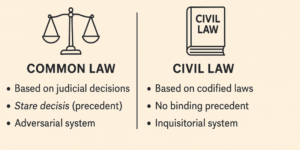In today’s competitive and interconnected global marketplace, businesses are constantly seeking strategies to expand, diversify, and maximise growth opportunities while mitigating risks. Among the most effective methods for achieving these objectives are franchising, joint ventures, and licensing. Each approach offers unique advantages and challenges, making them suitable for different contexts, industries, and business goals. Understanding the differences, applications, and strategic considerations of these methods is critical for entrepreneurs, managers, and investors aiming to enhance their organisation’s market presence and profitability.
1.0 Franchising
Franchising is a contractual arrangement where a franchisor grants a franchisee the right to operate a business using its established brand, business model, and intellectual property in exchange for fees or royalties (Justis & Judd, 2003). This strategy allows rapid expansion without the capital investment and operational management typically required for opening new company-owned outlets.
There are two primary types of franchising:
- Product distribution franchising – where the franchisee sells the franchisor’s products, such as in automobile dealerships or soft drink bottlers.
- Business format franchising – where the franchisee adopts the franchisor’s entire business system, including branding, training, and operational processes (Stanworth et al., 2004).
Advantages of franchising include rapid scalability, brand recognition, and shared risk between franchisor and franchisee. The franchisor gains market penetration without large capital investment, while the franchisee benefits from an established brand reputation and proven operational model (Dant et al., 2011).
However, disadvantages include potential loss of control over brand standards, conflicts with franchisees, and dependence on franchisee performance. For instance, inconsistent customer service in one outlet can damage the brand image globally.
A well-known example of successful franchising is McDonald’s, which operates in over 100 countries, largely through franchises, maintaining consistent brand experience while adapting to local market preferences (Love, 2008).
2.0 Joint Ventures
A joint venture (JV) is a business arrangement where two or more parties create a separate legal entity to achieve shared objectives. Each party contributes capital, resources, or expertise and shares in the risks and rewards of the venture (Geringer, 1991).
Joint ventures are often used for:
- Entering foreign markets where local knowledge is essential.
- Combining technological expertise and distribution networks.
- Sharing research and development (R&D) costs in high-investment industries.
Advantages include risk-sharing, resource pooling, and access to new markets or technology. For example, Sony Ericsson was formed in 2001 to combine Sony’s consumer electronics expertise with Ericsson’s telecommunications technology, enabling both firms to compete more effectively in the mobile phone industry (Luo, 2002).
Disadvantages can include management conflicts, differences in corporate culture, and unequal commitment from partners. These issues can lead to inefficiency or even dissolution of the joint venture. For example, DaimlerChrysler’s merger (which functioned partially as a JV structure in operations) failed due to deep cultural and strategic differences (Badrtalei & Bates, 2007).
3.0 Licensing
Licensing is a business arrangement in which the licensor grants the licensee the right to use its intellectual property (IP) — such as patents, trademarks, copyrights, or technology — for a specified period and under agreed terms, usually in exchange for royalty payments (Kim & Vonortas, 2014).
Licensing allows companies to monetise their IP without directly engaging in production, marketing, or distribution. It is common in industries such as technology, entertainment, and pharmaceuticals. For example, Disney licenses its characters to toy manufacturers, generating billions in royalty revenue without manufacturing the products itself (Wasko, 2020).
Advantages include low investment risk, rapid market access, and steady income from royalties. However, disadvantages involve the risk of IP misuse, loss of control over quality, and potential creation of future competitors if licensees develop similar products.
4.0 Comparative Overview
| Method | Ownership & Control | Investment Level | Risk Profile | Speed of Expansion | Typical Industries |
| Franchising | Franchisor retains brand control; franchisee manages daily operations | Low (for franchisor) | Shared between franchisor and franchisee | High | Food & Beverage, Retail, Services |
| Joint Ventures | Shared ownership and management between partners | Medium to High | Shared but potentially high | Medium | Automotive, Energy, Telecommunications |
| Licensing | Licensor retains intellectual property; licensee controls business operations | Very Low (for licensor) | Low to Medium (risk of IP misuse) | High | Technology, Entertainment, Pharmaceuticals |
5.0 Strategic Considerations in Choosing an Expansion Method
When deciding between franchising, joint ventures, and licensing, businesses should evaluate market conditions, internal capabilities, legal frameworks, and strategic objectives. Key considerations include:
- Control vs. flexibility – Franchising provides a balance between control and independence for franchisees; licensing offers minimal operational control; joint ventures require compromise between partners.
- Financial resources – Franchising and licensing require less capital from the owner compared to wholly owned expansions; joint ventures demand higher investment.
- Risk tolerance – Licensing generally carries the least operational risk, whereas joint ventures may involve complex risk management.
- Speed of entry – Franchising and licensing often allow quicker market penetration than joint ventures.
6.0 Legal and Regulatory Considerations
All three methods are subject to legal agreements and regulatory frameworks that vary across jurisdictions.
- Franchising is regulated in many countries to protect franchisees from unfair practices (e.g., the Franchising Code of Conduct in Australia).
- Joint ventures often require foreign investment approvals and must comply with both local and international laws.
- Licensing arrangements must ensure IP protection through enforceable contracts and may involve international IP treaties such as the Paris Convention for the Protection of Industrial Property.
Failure to address legal compliance can result in financial penalties, litigation, or loss of rights.
Franchising, joint ventures, and licensing are powerful tools for business expansion, each offering distinct benefits and challenges. Franchising enables rapid growth with shared risks, joint ventures provide strategic partnerships and market access, and licensing monetises intellectual property with minimal investment.
In an increasingly globalised economy, companies must carefully assess which model aligns best with their resources, objectives, and risk appetite. The decision should be informed by market analysis, legal considerations, and long-term strategic planning. By understanding the nuances of each method, businesses can craft expansion strategies that enhance competitiveness and ensure sustainable success in the global market.
References
Badrtalei, J. & Bates, D. (2007) ‘Effect of organisational cultures on mergers and acquisitions: The case of DaimlerChrysler’, International Journal of Management, 24(2), pp. 303-317.
Baldwin, R. (2016) The Great Convergence: Information Technology and the New Globalization. Harvard University Press.
Dant, R.P., Grünhagen, M. & Windsperger, J. (2011) ‘Franchising research frontiers for the twenty-first century’, Journal of Retailing, 87(3), pp. 253-268.
Geringer, J.M. (1991) ‘Strategic determinants of partner selection criteria in international joint ventures’, Journal of International Business Studies, 22(1), pp. 41-62.
Justis, R.T. & Judd, R.J. (2003) Franchising. Thomson/South-Western.
Kim, Y. & Vonortas, N.S. (2014) ‘Determinants of technology licensing’, Journal of Technology Transfer, 39, pp. 560-578.
Love, J.F. (2008) McDonald’s: Behind the Arches. Bantam.
Luo, Y. (2002) Cooperative strategies in international business. Lexington Books.
Stanworth, J., Purdy, D., English, W. & Willems, J. (2004) Franchising: An International Perspective. Routledge.
Wasko, J. (2020) Understanding Disney: The Manufacture of Fantasy. Polity Press.









